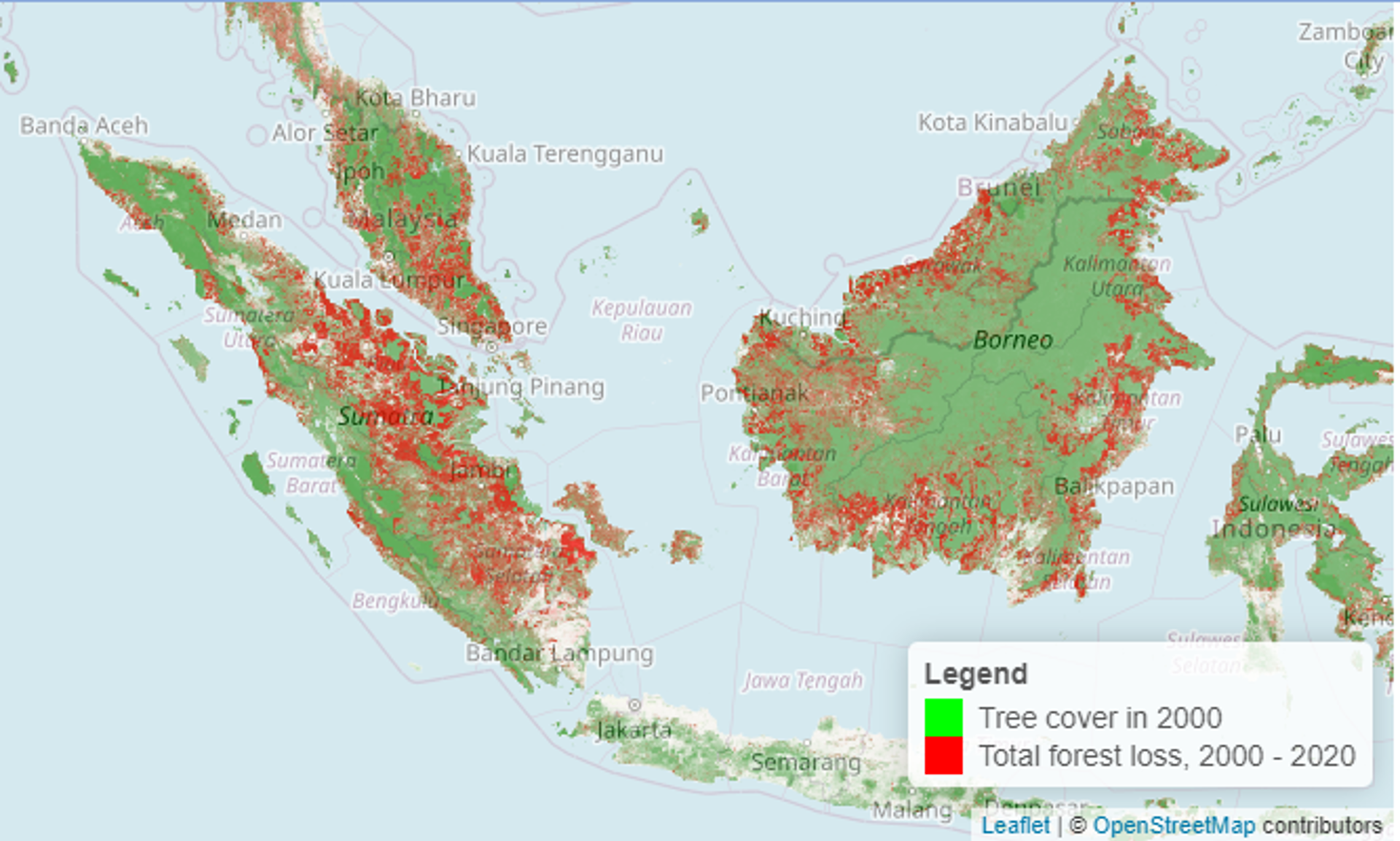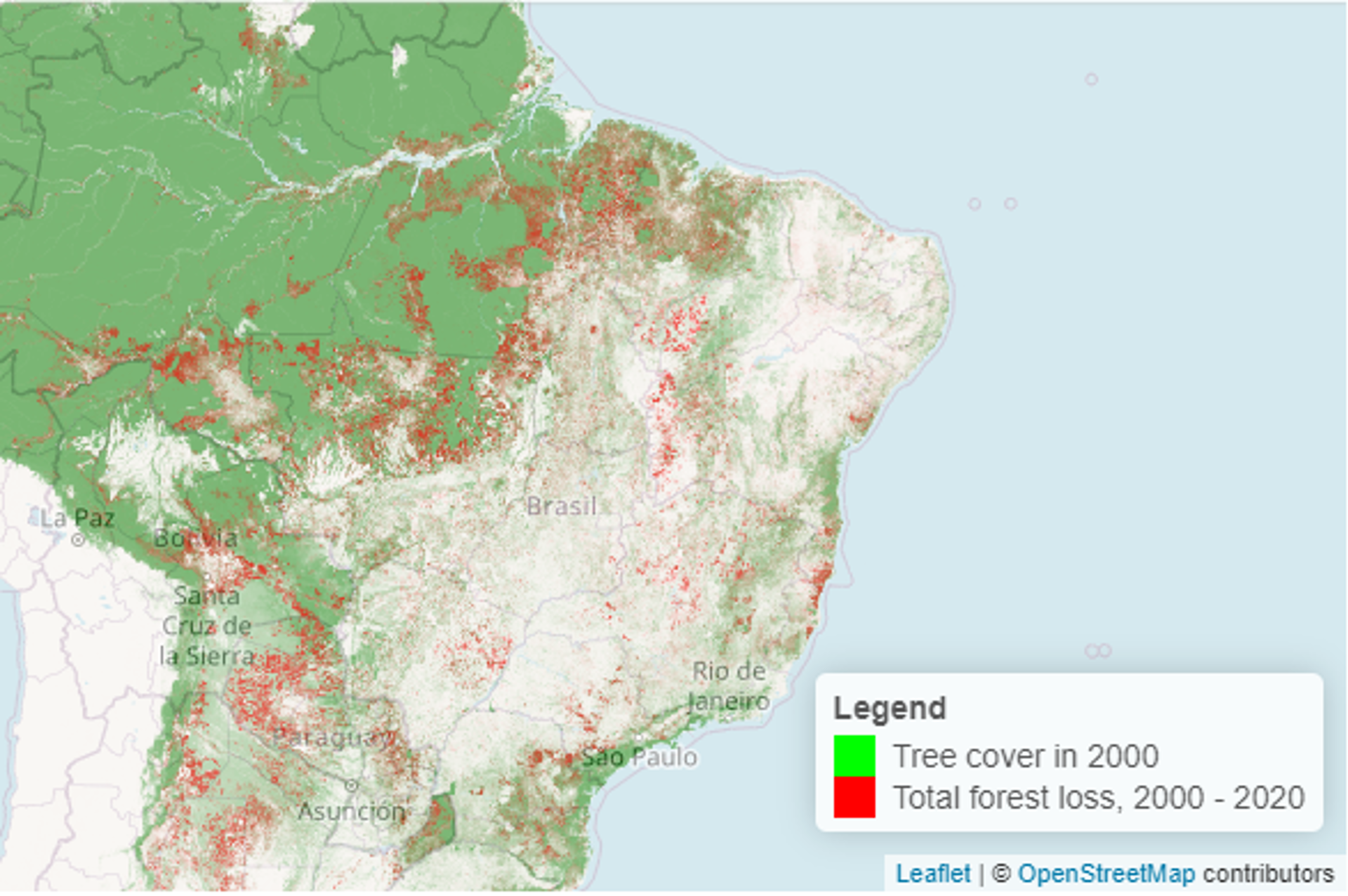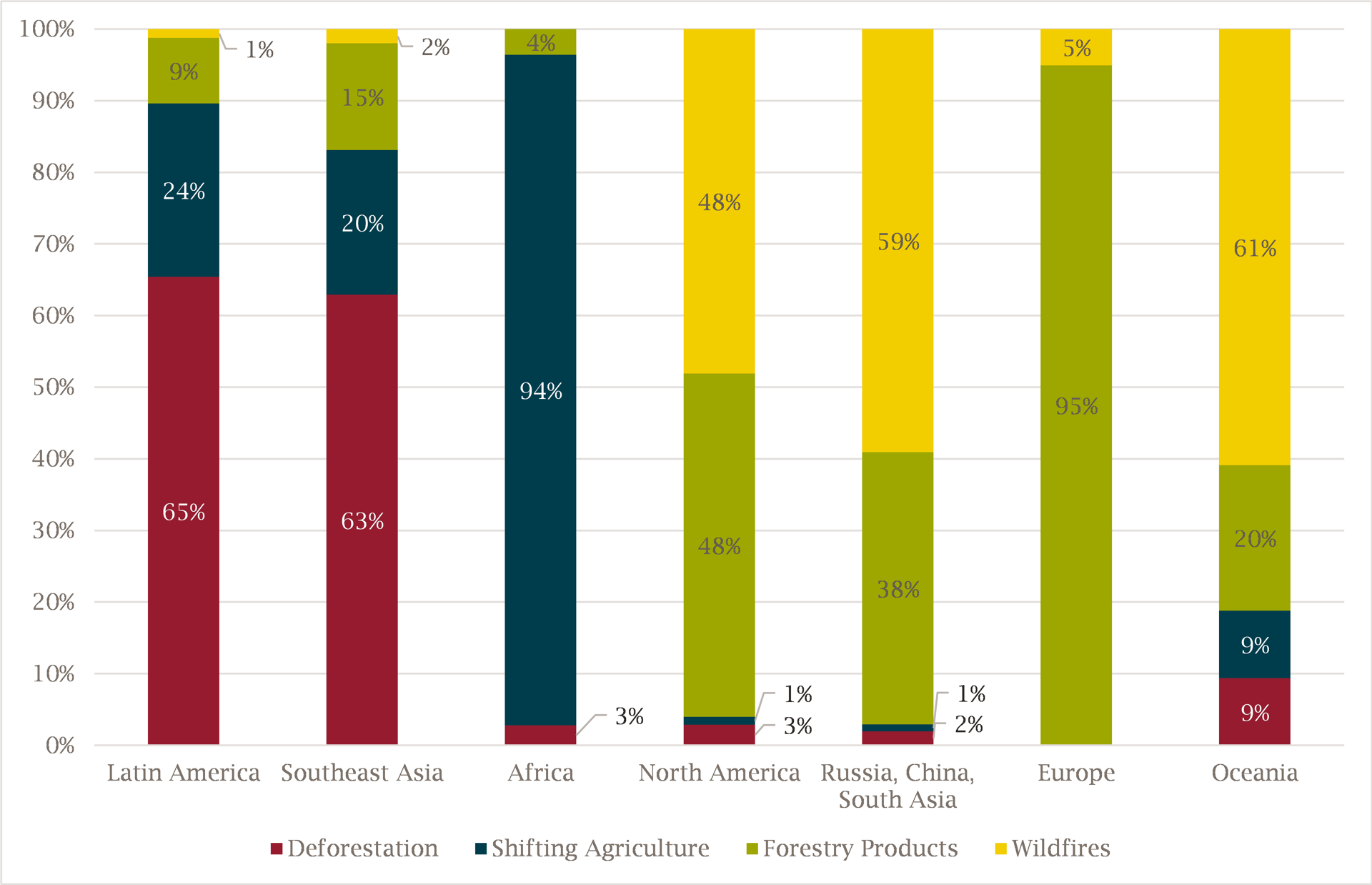Ending deforestation would help tackle climate change and unlock huge economic value
Over 100 world leaders have made a bold commitment to end deforestation by 2030 at COP26, the UN Climate Change Conference currently being held in Glasgow. The countries signing up for the pledge, which is underpinned by substantial sums of public and private finance, account for over 90% of our forests.
Whilst this is a welcome development in the fight against deforestation and climate change, action is needed fast. Putting these commitments into practice will be easier said than done. Previous declarations to end deforestation, such as the New York Declaration on Forests of 2014, have been unsuccessful. More forceful, determined steps will be needed to meet the 2030 deadline.
Moreover, the enforcement of the pledges remains unclear and there is little detail on how progress will be assessed. Global leaders could bolster their commitments with enforceable legislation limiting practices that drive deforestation. Or, preferably, they could design policies that make deforestation economically unattractive.
This article explores the economic value of forests, the forces behind deforestation and some of the actions that consumers, businesses and governments can take to bring deforestation to an end.
Why should we care about our forests?
Trees and forests provide a range of products and services, including food, medicine, building materials, shade and recreational space. The numerous sources of value require us to preserve and grow forests, rather than cut them down or harvest products from them.
The largest and most recognised benefit of forests is that they are a carbon sink: forests absorb more carbon than they produce, and therefore reduce the total amount of carbon in our atmosphere. Estimates from Harris et al. (2021) suggest that global forests remove twice as much carbon as they emit from deforestation and disturbances. Forests can therefore lower the future costs associated with climate change and temperature increases. However, deforestation and climate change reduce the ability of forests to remove carbon from our atmosphere. The destruction of these ecosystems means that almost all of the carbon stored in the trees and vegetation is lost. A study by Pendril et al. (2019) found that tropical deforestation was responsible for 2.6bn tonnes of CO2 per year - 6.5% of global CO2 emissions.
Forests also offer protection from soil erosion and flooding, whilst improving water quality and soil formation. Additionally, forests are closely linked to rainfall patterns and water availability. They contribute to atmospheric moisture, which is carried by winds and brings rainfall to other regions. This process also helps to regulate and cool local temperatures (Ellison et al., 2017).
Investing in the protection and restoration of forests also represents an investment in the diversity of nature and people. Forests are home to more than 80% of the terrestrial species of animals, plants and insects, while around 1.6bn people - including over 2,000 indigenous cultures - depend on forests for their livelihood.
Many researchers have tried to place an economic value on efforts to restore forests, recognising that they are a source of wealth. Estimates vary, but they are all large. In recent work that we completed for Terraformation, Frontier estimates that the net present value of returns from global tropical forest restoration could range from $5,000 to $20,000 per hectare. Based on conservative estimates of the total available land for forest restoration, we calculate the net present value of potential new revenue streams from restoring all degraded tropical and temperate forest ecosystems to be approximately $1trn. Our estimate is based on 80 years of cash flows and does not include the value of restored ecosystem services.
Drivers of deforestation
Using satellite imagery, the Global Forest Watch project estimates that the world lost 25.8m hectares of tree cover in 2020 - that's an area greater than the size of the United Kingdom. To effectively tackle deforestation, we need to understand what its main causes are. Importantly, we need to understand the distinction between deforestation and forest degradation so that governments can correctly identify the source of the problem and how to appropriately address it.
Figure 1: Forest loss in Indonesia, 2000 - 2020

Source: Frontier Economics, based on Hansen Global Forest Change v1.8 data.
Figure 2: Forest loss in Brazil, 2000 - 2020

Source: Frontier Economics, based on Hansen Global Forest Change v1.8 data
Deforestation involves the abrupt transition from land with trees to land without trees, with no subsequent regrowth. Forest degradation refers to a reduction in the density of trees in a particular area without a change in land use; in this case the forest is expected to regrow. Broadly, we lose forests for five reasons:
- Deforestation
- Commodity-driven deforestation is the long-term, permanent conversion of forests to other land uses such as agriculture, mining or energy infrastructure.
- Urbanisation is the long-term, permanent conversion of forests to towns, cities and urban infrastructure such as roads.
- Forest degradation
- Shifting agriculture is the small- to medium-scale conversion of forests for farming, which is later abandoned so that forests can regrow. This is different to deforestation from agriculture, where no forest regrowth occurs.
- Forestry production is the logging of managed, planted forests for products such as timber, paper and pulp.
- Wildfires destroy forests temporarily.
Approximately 27% of all forest lost is due to deforestation, while the remaining 73% comes from the three driving forces of forest degradation: forestry production (26%), shifting agriculture (24%) and wildfires (23%) (Philip Curtis et al., 2018). These principal causes are not spread evenly across the world. The distribution of deforestation is important because it can help governments decide where to concentrate resources to mitigate forest loss. To have a more informed discussion about where to focus forest conversation efforts, we need to understand why forests are being lost.
Nearly 95% of the world's deforestation occurs in the tropics (Philip Curtis et al., 2018), with commodity-driven deforestation accounting for almost two-thirds of forest loss in Latin America and Southeast Asia. Most forest degradation, however, takes place in temperate countries. The majority of forest loss across North America and Europe is now the result of harvesting forestry products from tree plantations, or it is due to wildfires.
Figure 3: Forest loss drivers in different regions

Source: Data from Philip Curtis et al (2018) Classifying drivers of global forest loss
Note: Percentages may not sum to 100% due to rounding
Agriculture is the largest single cause of deforestation and severe forest degradation (WWF, 2020) with some estimates attributing over 70% of all deforestation to agriculture (Hosonuma et al., 2012). Forests are cleared in favour of land for growing crops (for human consumption and animal feed), raising livestock and sourcing forestry products such as rubber, wood and paper. Within agriculture, most deforestation is caused by a few main products: beef, palm oil and soy. It is worth noting that palm trees, per hectare of land, provide more oil than other vegetable oil alternatives. So palm oil is not necessarily the issue, but rather the high demand for vegetable oil and the land it takes up. The substitution of less efficient vegetable oils could do more harm than good.
Meat consumption more generally is also a big contributor because of increased demand for soy-based animal feed, especially for poultry. Only a small proportion of soy is produced directly for human consumption, through products such as tofu or edamame beans (Fraanje & Garnett, 2020). This means that even British meat, which is not generally linked in the public mind to deforestation, is likely to be part of the problem through soy-based feed at the start of the supply chain.
The inefficient use of land (WWF, 2020) to source these products also contributes to deforestation. It is often easier and more profitable in the short term to expand into new land rather than to invest in improving the quality and yield of existing land. Poor land management and the resulting degradation can add to deforestation pressures.
It is therefore clear that what we eat, where it is sourced and how it is produced is an important lever that can be pulled to help bring deforestation to an end.
Case studies
Supermarkets’ role in tackling deforestation
Supermarkets are increasingly adopting ambitious targets on carbon emissions, food waste, recycling and the use of water and plastic. This is partly in response both to customer demands for greater sustainability and to UK government initiatives, but many supermarkets have taken a step further. For example, some have committed to net zero targets that are far bolder than the UK as a whole, and most are making commitments that match the highest ambitions of the Paris Agreement. Reporting on these targets has become a priority for supermarkets, which are thereby sending a clear message to suppliers and consumers alike that they are taking action and will continue to do so.
Deforestation-based targets are typically part of supermarkets’ sustainability plans. Supermarkets can have a large influence over the way that many deforestation-linked commodities are produced and traded, and how the end products are presented to consumers.
Sustainable Soy and Palm Oil
Sustainable sourcing aims to reduce the negative impact of existing consumption habits. Supermarkets have placed a particular emphasis on sustainably sourcing soy and palm oil for their own-brand products. The two main approaches used are purchasing certified produce and mapping supply chains.
Soy and palm oil certification is a valuable tool to promote sustainable agricultural methods and raise awareness. “Cefetra Certified Soya” (CRS) and the “Roundtable on Sustainable palm Oil” (RSPO) are among the certification bodies, which all verify that production is deforestation-free, environmentally friendly and economically viable. Many supermarkets generally aim for 100% of the soy or palm oil used in their own-brand products to be certified as deforestation-free. Some have already met these targets, or are very close to doing so, and have started to work closely with suppliers, manufacturers and other retailers to further reduce deforestation caused by soy and palm oil.
Substantial efforts have also been made to map the origins, processing and distribution of soy and palm oil. This mapping process increases the transparency of soy and palm oil usage across a complex supply chain, giving a better sense of how much soy or palm oil is embedded in products. Consequently, supermarkets hope to be better informed about the impact of what they sell on deforestation and about the efficacy of their targets.
Protein Substitutes
Another approach to reduce deforestation is to encourage the consumption of alternative products. Generally this can be achieved by substituting meat consumption for plant-based alternatives, replacing protein sources used in animal feed and only supplying meat with a low deforestation footprint (for example, local meat). Supermarkets have considered each of these three channels.
Plant-based alternatives for both meat and dairy have grown rapidly across the UK, with plant-based milk and cheese recording triple-digit sales growth between 2018 and 2020 (Smart Protein project, 2021). Supermarkets have capitalised on this trend, investing heavily in own-brand protein substitutes for meat and dairy products to improve their availability, variety and quality. Many supermarkets now directly cite an increase in plant-based protein alternatives consumption, which may be powered by demand from millennials and Gen Z in particular, as part of their sustainability plans.
Animal feed currently accounts for nearly three-quarters of soy production. Recognising that finding substitutes for soy could have a large positive impact on deforestation, supermarkets have invested in researching alternative sources, such as insect protein As part of their efforts, some have urged governments to ease regulatory requirements and develop financial incentives to support the scaling up of new, alternative animal feed industries which will ultimately reduce deforestation.
Partnerships
Lastly, supermarkets have partnered with or voiced backing for various charities and organisations that promote forest conservation. To this end, some supermarkets have committed to planting trees (engaging in reforestation), or increasing industry awareness and backing for sustainable practices. Most supermarkets have also pledged to support the “Cerrado manifesto” on the prevention of deforestation in the Cerrado region of Brazil.
UK Government – Due diligence on forest risk commodities
The UK is a big contributor to deforestation through the food we consume. That makes urgent action necessary so we eat only what nature can provide on a sustainable basis.
The UK Government is in the process of enacting the Environment Bill, which will be part of a new legal framework for environmental protection. Broadly, the Bill aims to improve air and water quality, protect wildlife, increase recycling and reduce plastic waste. It is currently going through Parliament and is expected to be become law by the end of 2021.
As part of the Bill, the Government has proposed a framework to address the deforestation caused by the UK's supply chains and consumption of forest risk commodities such as rubber, soy and palm oil. This framework is designed to contribute to global efforts to protect forests that are coming under threat from the expansion of agriculture. At its core, this proposal would:
- Make it illegal for businesses to use forest risk commodities that have not been produced in accordance with local deforestation laws in the country where they are grown;
- Require businesses in scope to conduct due diligence to ensure that forest risk commodities that have not been legally produced do not enter their supply chain, and to publish this information;
- Enable the Government to levy fines on businesses that continue to use forest risk commodities that have not been produced legally and/or that do not have a robust system of due diligence in place.
The Bill, however, is not without its limitations. One is that the current proposal applies only to forest commodities that are classified as illegal under the laws of the producer country. This creates a large loophole. Tackling global deforestation will remain a challenge as long as the approach taken continues to rely on the same laws that have so far failed to properly address the problem.
One risk with this approach is that it could potentially reward countries that rewrite laws to make previously illegal deforestation legal, as Indonesia recently did (Jong, 2021). It could also make it increasingly difficult to prove whether cases of deforestation are illegal or not by reducing funding for enforcement.
One option for the UK government is to impose additional sustainability requirements, for example defining standards for each commodity based on international certification criteria such as those set by the CRS and RSPO.
The Environment Bill is a prime opportunity for the UK to reinforce environmental protection laws. It is a step in the right direction, but much more needs to be done if it is to live up to the expectations set out by the Government.
Conclusion
Forests play a central role in the survival of the planet. They can be substantial sources of economic value, which will only grow as the dangers of climate change become increasingly imminent.
To effectively tackle deforestation, action needs to be taken globally and cooperatively. No single party is responsible for curbing the loss of our forests. It is the collective actions of governments, firms and consumers that will enable us to preserve and restore our ecosystems. Much has already been achieved: governments around the world have implemented policies to protect forest land, firms are committing themselves to sustainability and deforestation targets, and consumers’ preferences are shifting towards more sustainable products. World leaders have recognised at COP 26 the dangers of deforestation and have set ambitious targets to halt the damage. There is a need, however, for these targets to be monitored and for clear economic mechanisms and incentives to ensure they are met. A great deal of work must still be done.





